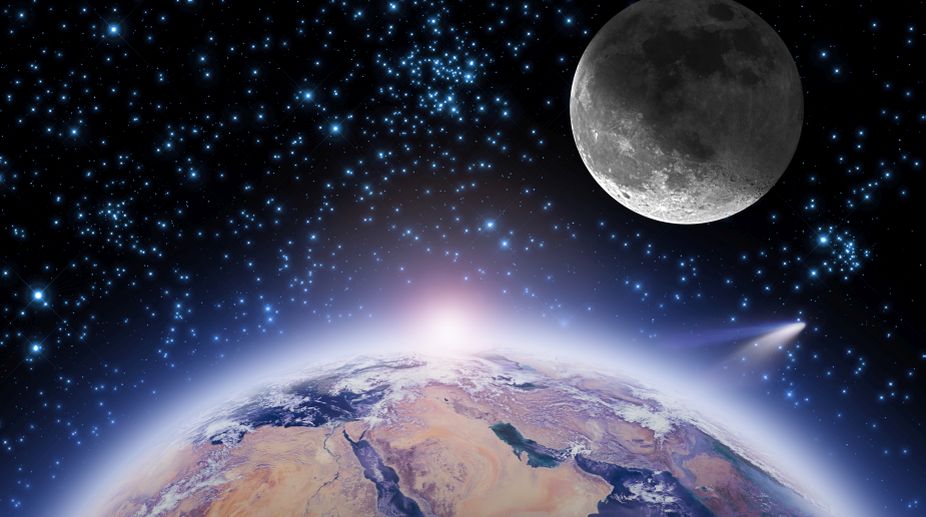The Earth, the Moon and certain meteorites were formed from materials that were more similar, holding almost indistinguishable isotopic characteristics, a new study has found.
Most scientific models contend the Earth formed gradually by addition from an assortment of Moon- to Mars-sized masses that had a vast array of isotopic characteristics, researchers said.
Advertisement
"The Earth accreted from an isotopically homogenous reservoir," said Nicolas Dauphas, Professor at University of Chicago in the US.
"In terms of colours, you could say that it was not 'green, blue, red,' but rather 'green, green, green,'" said Dauphas.
By analysing data for certain elements, Dauphas was able to decipher the isotopic nature of the material that formed the Earth.
Anomalies in the elements provided "fingerprints" to recreate the formation process, helping to establish "genetic ties" between planetary bodies and their building blocks.
Dauphas used the isotopic similarities he found in select elements to record the stages of Earth's formation.
Soon after the Earth formed 4.5 billion years ago and as its core grew, the core attracted elements that had strong affinities for metal.
As core formation was almost complete, however, such elements – as they continued to arrive from space – were left to reside in the mantle.
This helps explain the age of parts of the Earth and the role they played in forming our planet, Dauphas said.
In addition, the research reveals that a rare type of extraterrestrial material known as enstatite meteorites (named after a mineral they contain in abundance) formed half of the first 60 per cent of the Earth.
After that, 100 per cent of the rest of the Earth was formed by enstatite-type impactors.
"Before this work, the question of the nature of the Earth's accreting material through time was mostly rhetorical," said Dauphas.
"By studying high-precision measurements, we have shown that the Earth, the Moon and meteorites with a high concentration of the mineral enstatite have almost indistinguishable isotopic compositions," he said.
The findings shed light on the formation of the Moon, which has been difficult to explain using the simplest models of the Earth's formation.
"The Moon is isotopically similar to the Earth. Therefore the giant impactor that struck the Earth soon after it was created, thereby forming the Moon, most likely had a similar isotopic composition to the Earth," Dauphas added.
The research was published in the journal Nature.









